Lea Wait's Blog, page 87
June 13, 2022
FLAG DAY… PLUS
Happy Flag Day to all! I’ve never thought much about Flag Day, but since this post is on the (non)holiday, I wondered why we have such a day to commemorate the red, white, and blue. After all, we already have Independence Day and Memorial Day.

But first a little journey to the past about why we have flags at all. The use of flags as such date back to the ancient peoples of what is now China, perhaps a thousand years BCE. History tells me the founder of the Zhou dynasty had a white flag carried before him. Later Chinese flags bore images such as a red bird, a white tiger, or a blue dragon. Rulers and military higher-ups propped them on chariots and planted them on the walls of captured cities.

Remember Iwo Jima and the American soldiers’ struggle to plant the red, white, and blue on that hill, proclaiming they were not defeated? Even in ancient China, the fall of the flag meant defeat, and the king made sure his flag his flag was carried by another important personage, so if it fell, he was not defeated, and also not his realm.
About the U.S. flag, the earliest reference to establishing a “Flag Day” is in 1912, crediting George Morris of Hartford, Connecticut, with suggesting a day to honor the adoption of the American flag on June 14, 1777 by resolution of the Second Continental Congress. Most of us know the stripes represent the original 13 Colonies and the stars the 50 states of the Union. If I was taught the symbolic meanings of the colors, I don’t recall. Red symbolizes hardiness and valor, white purity and innocence, and blue vigilance, perseverance, and justice. All values we should aspire to and often fall short.
But… George Morris’s effort toward a Flag Day explains the date and the reason but not the actual observance. That didn’t come about until much later. Presidents Wilson and Coolidge issued proclamations asking for June 14 to be observed as National Flag Day, but not until 1949 did Congress approve it and President Truman sign it into law. Not much is made of the day because it is left up to the president to officially proclaim the observance.
More recently, people flying the red, white, and blue are also displaying below it the blue  and yellow flag of Ukraine in support of that country’s struggle against the Russian invasion. Their flag evolved over time as Ukraine freed itself from both the Austro-Hungarian empire and the Soviet Union. The red banner of the Soviet Union with its golden hammer, sickle, and star was modified for use in Ukraine by having a stripe of light blue added to the bottom. Once anti-communist forces were successful, the flag became the nationalist blue-yellow banner in 1992. The colors represent the country’s role as Europe’s breadbasket, blue denoting the skies over the vast plains and yellow for the grain growing in the huge wheat fields below.
and yellow flag of Ukraine in support of that country’s struggle against the Russian invasion. Their flag evolved over time as Ukraine freed itself from both the Austro-Hungarian empire and the Soviet Union. The red banner of the Soviet Union with its golden hammer, sickle, and star was modified for use in Ukraine by having a stripe of light blue added to the bottom. Once anti-communist forces were successful, the flag became the nationalist blue-yellow banner in 1992. The colors represent the country’s role as Europe’s breadbasket, blue denoting the skies over the vast plains and yellow for the grain growing in the huge wheat fields below.
Democracy is under threat today around the world. So to commemorate Flag Day, I will be thinking of the brave American colonists who fought and won and established our democracy. And of the brave Ukrainian patriots. May we keep fighting to keep our respective democracies. I look forward to your comments.
****
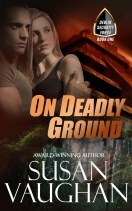 The Kindle version of ON DEADLY GROUND, the first book in my Devlin Security series, is on sale now through June 30 for only 99 cents. No flags in the book, but Max and Kate’s race to return a valuable Mayan artifact. You can find it here: http://getBook.at/OnDeadlyGround
The Kindle version of ON DEADLY GROUND, the first book in my Devlin Security series, is on sale now through June 30 for only 99 cents. No flags in the book, but Max and Kate’s race to return a valuable Mayan artifact. You can find it here: http://getBook.at/OnDeadlyGround
Mysterious & Mainely Summer Eats
Come summer I like to eat, especially after a long day of writing tense thrillers that increase my appetite. Now, I like to eat year round, but summer eating holds a special place in my heart, er, stomach. So what do I enjoy eating after a long day of writing under the hot sun?
My son, who just graduated from college, once worked in a deli and used to bring home some tasty sandwiches. Lately, we’ve been having competitions to see who can make the best Reuben. But the best summer sandwich, for my money, is a real Boston Italian, which is different—and significantly better—than a Maine Italian. The Boston Italian is served on a crusty roll and has fatty mortadella, rich provolone, capicola—or gabagool, as Tony Soprano would say, two types of salami, lettuce, onions and lots of good olive oil drizzle over it, and pooling over the wax paper. Having a son work at a deli has made it easier to indulge in the summer sandwiches I love. After a productive day writing, a hearty Italian with Cape Cod chips hits the spot.

OLYMPUS DIGITAL CAMERA
I live in Maine and we love our seafood. Now I know what you’re thinking. You believe I’m going to talk about a boiled Maine lobster. But no, I’m going to regale you about the singular deliciousness of fried clams done correctly. Good ones are hard to come by, as I’m very fussy about where I get my fried clams. But I have a secret spot that knocks fried clams out of the park. They are coated in unctuous crumbs—NEVER BATTER—with fat, juicy bellies that dissolve on your tongue. My secret place makes their own tartar sauce so that when you dunk the moist clams inside, they emerge with this glistening, yellowish dip that only enhances the intense, saline rich clam-belly favor. If you’re a Mainer, you understand what fried clams means to us folks Merely writing about it is making my mouth water.

Then there’s sweet summer corn from one of the nearby farms, slathered in butter and sprinkled with salt. Cold, decadent ice cream from one of the local dairies. Lobster rolls brimming with tended knuckle and claw meat (no tail) and mixed with just enough mayo to hold everything together. Then of course there’s pizza. Hot pizza on a hot summer night is something to die for. Then again I love pizza every season and for every meal.

And while we’re at it, I must say that all of the above goes splendidly with cold beer. And since Portland has more breweries per capita than anywhere else in the country, I’ll be quaffing a 20 ounce Foulmouthed, Munchen Klempen with my fried clams. This beer is a German style Marzen lager, cold fermented, amber, malty and quite delicious. And with my Lobster roll I’ll be tipping an On The Point Pilsner brewed by Fore River Brewery. And the great Alexander by my favorite brewery, Schilling out of Littleton, New Hampshire.

So now you know what I like to eat and drink during the summer months after writing my psychological thrillers. Admittedly, it’s a short list. So what foods do you enjoy come summer. Please leave a comment and add your two cents about the best meals to feast on during the dog days of summer.
Now, back to my coffee and writing.
June 10, 2022
Weekend Update: June11-12, 2022
 Next week at Maine Crime Writers there will be posts by Joe Souza (Monday), Susan Vaughan (Tuesday), Kaitlyn Dunnett/Kathy Lynn Emerson (Thursday), and William Andrews (Friday).
Next week at Maine Crime Writers there will be posts by Joe Souza (Monday), Susan Vaughan (Tuesday), Kaitlyn Dunnett/Kathy Lynn Emerson (Thursday), and William Andrews (Friday).
In the news department, here’s what’s happening with some of us who blog regularly at Maine Crime Writers:
Look how many of us, past and present, will be in one place today!
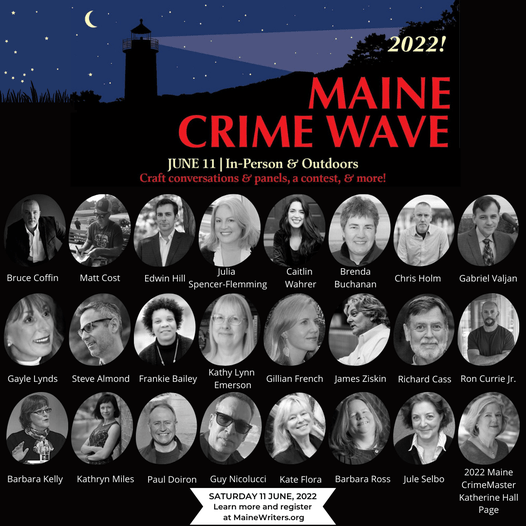
From Kathy Lynn Emerson:
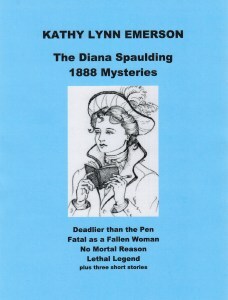
The Diana Spaulding 1888 Mysteries is out! This collection of all four novels and the three short stories in my series featuring a nineteenth-century scandal sheet reporter as the amateur sleuth, is now available as an e-book for the bargain price of $9.99. Included are Deadlier than the Pen, Fatal as a Fallen Woman, No Mortal Reason, and Lethal Legend. Here’s a buy link for most outlets. https://books2read.com/u/3y1M1n It’s available in Nook, Kobo, iBook, and Kindle formats.
Along with 20+ other Maine authors, Maggie Robinson will be outdoors under a tent at the Chesterville Town Office from 10-2 today (Saturday) for a library fundraiser. There will be an auction, luncheon, and lots of books for sale! They’re raising money for a bookmobile. There are rumors of chocolate.
Kate Flora would love your feedback on two proposed covers for the next Thea Kozak mystery. Here are the two the publisher has sent me. Do they work? Draw you in? What would you change?
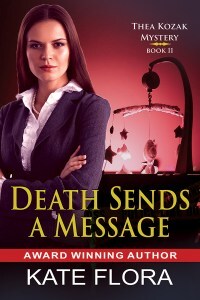
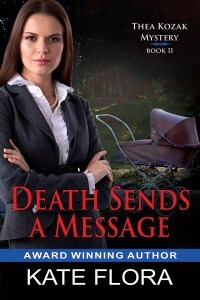
And one final reminder: Our Body Contest closes on Thursday. Do we have your photo yet?
An invitation to readers of this blog: Do you have news relating to Maine, Crime, or Writing? We’d love to hear from you. Just comment below to share.
And a reminder: If your library, school, or organization is looking for a speaker, we are often available to talk about the writing process, research, where we get our ideas, and other mysteries of the business, along with the very popular “Making a Mystery” with audience participation, and Casting Call: How We Staff Our Mysteries. We also do programs on Zoom. Contact Kate Flora
Outward Bound
I am leaving the house tomorrow. This may not sound newsworthy to you, but I probably do not need much more than a few extra fingers and toes to record my perambulations in the outside world since the pandemic began. Last year, I went to various doctors, saw a community theater production my oldest daughter was in, flew to Las Vegas for a week, spoke at the public library in Brunswick during their Mystery Month, and got a couple of really necessary pedicures. My little 2021 diary from the excellent Maine company Gallery Leather is sadly empty.
Things have not been any more stimulating in 2022, although a few weeks ago I watched 5-year-old Josephine in her dance recital debut in Massachusetts. (She, of course, stole the show and my heart.) But on June 11, I’m participating in a local library fundraising event, and I couldn’t be happier. Actually, the library doesn’t even exist yet—the organizers hope to get a bookmobile going, and I am all for it. They’re hosting a “Meet the Authors”/auction/luncheon at the Chesterville Town Office from 10-2, which sounds like fun. I do hope I remember how to interact with people who are not my family. I’ll have to wear real clothes. And shoes. If you’re in the neighborhood…
I’ve got a huge soft spot for libraries. As a kid, mine was within walking/biking distance. I did all the summer reading programs, getting my rocket to the moon or star in the sky before anybody else on the chart. As an adult, I worked in three different school libraries in three different states, and volunteered in a fourth public library. My last job was clerking in the Mt. Blue High School library in Farmington, where I discovered technology had replaced the checkout cards and card catalogues of my youth. I got pretty good scanning barcodes and figuring out the computer system.
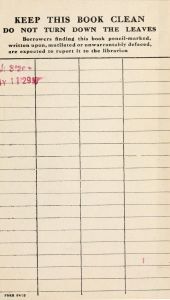
It was in this library that I got “the Call” from my agent one afternoon in 2009, letting me know she sold my first book to Berkley Heat. I still have the piece of scrap paper I took notes on, which I can barely read, since my hands were shaking so. When I hung up, I cried, which alarmed the kids who had stayed after school to study. I assured them they were happy tears, though they probably still think I was crazy.
But back to the local event. I have some promo packets made up, with bookmarks and postcards. I’ll have a few books to sell, and will donate two baskets to the auction. There will be chocolate. I think I’m ready.
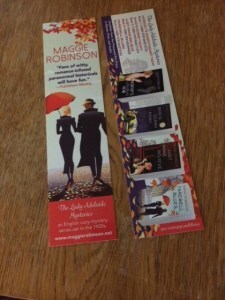
You never know whether anyone will show up to these things, and it’s conceivable I’ll sit in isolated splendor with the other writers. But that’s okay. After two years of hermitting, it will be a nice change to be out and about for a good cause. Long live libraries!
Have you been anywhere exciting lately?
For more information about Maggie and her books, please visit www.maggierobinson.net
June 9, 2022
ANYONE FEELING LIKE A TORTOISE?

Did anyone else want to resign from the human race during the stench-y live-streaming Depp v. Heard defamation trial? Or because they couldn’t escape news on the over-spent, smug weddings of the why-are-they-famous people who profess to resent (but welcome) the paparazzi and People Magazine stories? Or reading about wars, or viewing ass-backwards discussions of our society’s gross predilections for violence? Or seeing the statistics on the world’s insatiable habit of unworthy media-grazing?
Anyone else considering living like a tortoise – one who decides to pull their head deep under their shell where only the computer (sans wi-fi), and refrigerator and the bed reside? Shutting out everything else?

I was pulling my head in when I happened on an interview on the BBC with novelist/short story writer Jennifer Egan (multi-award winner including a Pulitzer for A Visit from the Goon Squad); she was saying she loved to read “old” books by writers in earlier eras (Industrial, Progressive, New Deal, Golden Age etc.) to see what people were thinking, working on, dealing with in former times. She made the often-heard, and often-repeated observation that people do not change, only technology does.

But, in my brain, an argument took shape: Isn’t technology changing people? Some scientists point to how the use of it trains our brains in new ways. Sociologists bemoan the lessening of attention spans, the increasing disability of ferreting out truths, how the extreme “me-generation’s” love of Twitter and Facebook and Instagram junki-ness lessens our sense of self-esteem and feeds a wonky need to feel present in strangers’ lives.
 Psychologist have written extensively on the decline in mental health because of ‘legitimate’ uses – and ‘criminal and deceptive’ misuses – of technology.
Psychologist have written extensively on the decline in mental health because of ‘legitimate’ uses – and ‘criminal and deceptive’ misuses – of technology.
Listening to the interview, I was getting pretty down, realizing that, as a writer, I could include myself as one of the “invaders”. Didn’t I desire to be in strangers’ lives? Didn’t I want people (those I knew and didn’t know), to read my books?
The ‘why do I put in hours every day to bring a story to life’ question that sometimes crops up (usually if the day is not going well), suddenly consumed me and threatened to send me into a descending ‘why’ spiral.
But then, my attention was pulled back to Egan’s interview. She was saying she felt she was compelled to write for some of the same reasons she was compelled to read “old” books. She wanted to leave a trail of how the society she rendered was thinking, what they were doing, what was important to them. Who did they love, revere? Who did they hate, vilify?
 She said she had no idea if her books would be among those that remained on library shelves (or offered at online bookstores) a hundred years from now, but if that happened, she hoped that they would reveal the political, social and human nature of a certain time.
She said she had no idea if her books would be among those that remained on library shelves (or offered at online bookstores) a hundred years from now, but if that happened, she hoped that they would reveal the political, social and human nature of a certain time.
And then Egan revealed (almost as if she was ashamed of it), her deepest desire regarding her writing; what she was going for every time she set pen to paper, or fingers to computer keys. She wanted to entertain. She said she wanted to take readers out of their “everyday” lives, transport them, make them care about imaginary characters – to empathize, sympathize, perhaps see themselves or others in her characters. She wanted the reader to enjoy a few philosophical sidetracks and themes that were on her mind. But mostly – to entertain.
Writing stories was a way to entertain herself, she said – and hopefully others.
My descending spiral ground to a halt and took an up-tick. Egan’s ultimate reason made sense to me, and it felt kind and giving and not at all narcissistic. More like serving guests a scrumptious dinner with fine wine and then offering a mouth-watering dessert – things I could do while I let technology do its thing: my Spotify could play a program of calm jazz, my ‘smart’ tv could run through images of waterfalls, my phone could obey the ‘silent’ mode, my computer could automatically graze for the latest research I wanted to access, and Instagram could organize the latest photos my daughter posted of her life in Los Angeles.
The interview made me feel better. But, even as Egan’s interview came to a close, I could still feel a ‘tortoise week’ crooking its finger at me… you know you want me, it seemed to say….
June 8, 2022
Mainely Writing
Today we introduce you to writer Sharon Dean, whose new mystery is set in Maine.
Sharon Dean: Writer Matt Cost lives in Maine and sets his Mainely Mystery series in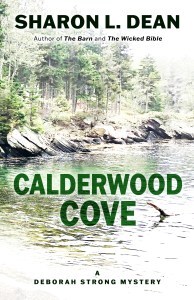 The Pine Tree State. We both publish through Encircle Publications located in Maine. My newest novel, Calderwood Cove, is set in Maine. Why? I’ve never lived in the state that I always thought was huge when I lived in Massachusetts and New Hampshire. It’s dwarfed, though, by Oregon, the state I now live in.
The Pine Tree State. We both publish through Encircle Publications located in Maine. My newest novel, Calderwood Cove, is set in Maine. Why? I’ve never lived in the state that I always thought was huge when I lived in Massachusetts and New Hampshire. It’s dwarfed, though, by Oregon, the state I now live in.
When I thought of Mainely Writing for a blog title, I began to think about titles and my sense of place. Calderwood Covewas easy. I’ve often visited with friends in a similarly named cove in Maine. My title Cemetery Wine was generated from my memory of a cemetery overlooking a lake in southern New Hampshire and The Barn came from my memory of a barn in Massachusetts that had a wooden cow’s head peeking from its rafters. Leaving Freedom and my forthcoming sequel Finding Freedom allude to an imaginary town in Massachusetts that is much like the town where I grew up. The title also suggests the idea of Freedom that my character seeks.
Titles matter. Mine don’t always capture the place where I set my novels, but my settings put me into the New England that I carry in my bones. The Isles of Shoals, a New England university, a cemetery, a barn, a small town library and, yes, a cove in Maine. I don’t always begin a novel knowing what its title will be. In fact, I found the title Leaving Freedom only after that novel was completed.
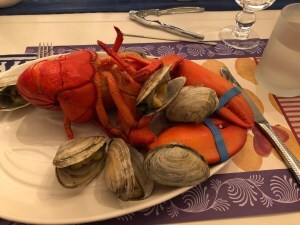 Some writers begin with a title, some with a plot, some with a character, some with a stray word or a newspaper headline. I’ve been in a book discussion group for years and I still keep my connection to these LitWits via the miracle of the internet. We’ve read almost two hundred and fifty books, some good, some mediocre, some dreadful. I recently looked over the titles. I don’t remember most of the plots, I might remember a vivid character, but mostly the titles evoke in me a sense of place. The House of Mirth puts me into the middle of late nineteenth-century aristocratic New York City and The Devil in the White City sets me in the middle of the 1893 Chicago World’s Fair. Fried Green Tomatoesopens a southern world I never saw and the horrifying Beloved makes vivid the world of slavery. When I see titles like The Things They Carried and The Kite Runner, I’m in the midst of war or impending war. I’m in a convent with Mariette in Ecstasy and a reform school with The Nickel Boys. I’m fly fishing in Montana with A River Runs Through It, overlooking Niagara Falls in The Falls, on a ship in the icy Greenland waters in Smilla’s Sense of Snow. Some of these titles you may recognize, some you may not. But whatever we read, books plunge us into worlds we come to know.
Some writers begin with a title, some with a plot, some with a character, some with a stray word or a newspaper headline. I’ve been in a book discussion group for years and I still keep my connection to these LitWits via the miracle of the internet. We’ve read almost two hundred and fifty books, some good, some mediocre, some dreadful. I recently looked over the titles. I don’t remember most of the plots, I might remember a vivid character, but mostly the titles evoke in me a sense of place. The House of Mirth puts me into the middle of late nineteenth-century aristocratic New York City and The Devil in the White City sets me in the middle of the 1893 Chicago World’s Fair. Fried Green Tomatoesopens a southern world I never saw and the horrifying Beloved makes vivid the world of slavery. When I see titles like The Things They Carried and The Kite Runner, I’m in the midst of war or impending war. I’m in a convent with Mariette in Ecstasy and a reform school with The Nickel Boys. I’m fly fishing in Montana with A River Runs Through It, overlooking Niagara Falls in The Falls, on a ship in the icy Greenland waters in Smilla’s Sense of Snow. Some of these titles you may recognize, some you may not. But whatever we read, books plunge us into worlds we come to know.
I love books that give me a sense of place. Matt Cost writes mainely about Maine and I write mainly with a sense of place in the New England I still call home.
write mainly with a sense of place in the New England I still call home.
In this nomadic world we live in, how much do you choose a book by a title that evokes a place you once loved or are curious to learn about?
Sharon L. Dean grew up in Massachusetts where she was immersed in the literature of New England. She earned undergraduate and graduate degrees at the University of New Hampshire, a state she lived and taught in before moving to Oregon. Although she has given up writing scholarly books that require footnotes, she incorporates much of her academic research as background in her mysteries. She is the author of three Susan Warner mysteries and of a literary novel titled Leaving Freedom. Her Deborah Strong mysteries include The Barn, The Wicked Bible, and Calderwood Cove. Dean continues to write about New England while she is discovering the beauty of the West.
June 6, 2022
It’s All In The Name
We took a meander up the coast in mid-May hoping to spot warblers, but a weekend of dense fog turned us from birdwatchers to birdlisteners. It was fun all the same. Hiking through a coastal woodland with nature’s music as a soundtrack is lovely.
We drove Route One from Portland to Hancock County, an interminable trip in the summer but hands down the most enjoyable road this time of year. It’s an annual ritual to drive the post road in the springtime, checking to see if anything exciting happened over the winter.
Not a heck of a lot changes along the coastal corridor from year to year, and in some places, from decade to decade. (Perry’s Nut House, anyone?) But new businesses do bloom each spring, and this year we jotted down their names as we passed from town to town.
We spotted a place called The Only Donut, a response, perhaps, to The Holy Donut in Portland.  We didn’t stop to see how The Only Donut’s offerings stack up with the famous Maple Bacon confections from the church of yumminess, which hands down has the best slogan—If Loving Donuts is Wrong, I Donut Want to be Right.
We didn’t stop to see how The Only Donut’s offerings stack up with the famous Maple Bacon confections from the church of yumminess, which hands down has the best slogan—If Loving Donuts is Wrong, I Donut Want to be Right.
Had we been in the mood for pastry, the Scone Goddess in Northport would have gotten the nod.  The sign was fabulous and I bet the food is, too.
The sign was fabulous and I bet the food is, too.
We noted an unusual number of businesses with Mainely in their names this trip. Mainely Used Cars. Mainely Gallery. Mainely Burgers. You get the picture.
A check of the Maine Secretary of State’s corporate name website shows this convention is wildly popular. There’s Maine-ly Harmony (a non-profit in Belgrade) and Maine-ly Trees in Strong (which is true, literally). And one cannabis entrepreneur calls their business Mainely Dope, which also is a pervasive theme all along the coast these days.
According to the Secretary of State’s website, a lot of Mainers also incorporate “unlimited” into their business name. We drove past Plants Unlimited. Others with the same idea include Carpets Unlimited, Boxes and Bags Unlimited and (my personal fave) Smart Pants Unlimited. I am familiar with Smartie Pants, but really would like to know more about smart pants. It’s a wicked good question, don’t you think?
We drove past Plants Unlimited. Others with the same idea include Carpets Unlimited, Boxes and Bags Unlimited and (my personal fave) Smart Pants Unlimited. I am familiar with Smartie Pants, but really would like to know more about smart pants. It’s a wicked good question, don’t you think?
Which brings me to the most Mainey business category of all, those who work “wicked” into their name. They’re represented in numerous industries and are all over the map. Wicked Brew Café in Bangor. Wicked Maine Lobster in Saco. Wicked Clean Car Wash in Searsport and Wicked Cool Vans in Skowhegan.
 There’s also Wicked Joe Coffee, which has recently partnered up with The Holy Donut for a caffeine/carbohydrate punch that could give Dunkin’s a run for their money, unless the ubiquitous pink and orange coffee joints hook up with the cannabis folks.
There’s also Wicked Joe Coffee, which has recently partnered up with The Holy Donut for a caffeine/carbohydrate punch that could give Dunkin’s a run for their money, unless the ubiquitous pink and orange coffee joints hook up with the cannabis folks.
That would result in what we call Market Saturation Unlimited.
BLOG READERS: What are your favorite Maine business names? Drop a note in the comments please!
Brenda Buchanan brings years of experience as a journalist and a lawyer to her crime fiction. She has published three books featuring Joe Gale, a newspaper reporter who covers the crime and courts beat. She is now hard at work on new projects. FMI, go to http://brendabuchananwrites.com
Deja Vu, All Over Again, Or I Loves Me A Good’un
John Clark talking about two seemingly disparate activities I really like. It began back in the 1980s when I discovered how addicting and fun computer role playing games (RPGs) were. The Ultima series, Might and Magic games, Eye Of The Beholder, the Elder Scrolls series, and so many more pulled me into new worlds where dungeon crawls, fighting all sorts of baddies (from giant spiders to fire-breathing dragons), and defusing locks on treasure chests absorbed countless hours. I never knew whether the contents of a treasure chest were going to be rotten cabbage, or a +9 Ring of Protection.
That was a big part of the attraction to these games, having a random chance of getting the item you needed to defeat the bad guy at the end of the game. It explains the attraction of instant scratch tickets, although I seldom buy any.
While I still play an occasional game (and buy way too many I might never get around to trying), Writing and creating new worlds and interesting characters tends to steal much of my game-playing time. Frankly, I find myself writing as much to discover what’s going to happen next, as anything.
That leads to another pastime that has the same thrill, for me at least, as opening those treasure chests deep in a dungeon. I love a good library book sale. I tend to buy a lot when I go, but not to read. Instead, I rely on a skill I developed quite by accident when I was the librarian in Hartland. It began when a friend was discarding a considerable number of items from an academic library. They were offered to all Maine libraries via MELIBS-L the library listserv. There were a few takers, but at least a pick-up truck load remained, so I claimed them and soon discovered that many sold for serious money online.

By the time I retired from the library world, I could tell rather quickly what books were worth selling online. I started selling to keep myself busy, while generating some spending money (although a lot of it has landed in the 529 plans for our three grandkids).
COVID-19 killed off library book sales. Not only did libraries not feel comfortable having them, many stopped accepting donations because they had no room or volunteers to process them. That drought, with a few exceptions, lasted until recently.
May brought two dandy sales less than a week apart. The first was a 25 cent per item at the Gray Public Library, Both daughter Lisa and I went, although I stayed far longer than she did. By the time I was done, my car was filled, and the great crew their Friends group assembled were happy with what I spent. Even better was the Buck-A-Bag sale at the Auburn Public Library. It ran from Wednesday to Saturday. I hit it twice because they had so many good items.

In addition to finding plenty to sell online as I triaged stuff, I set aside a bunch of graphic novels for Arthur the eleven year old boy I mentor at the Alfond Center here in Waterville. He was thrilled, so I’m keeping my eye out for more at future book sales. My swimming buddy Caroline has a brother with cerebral palsy who lives in a nursing home and loves classical music. I pulled out fifty or so CDs and passed them on to him. All three grandkids got their share of board and picture books, with Piper selecting a few chapter books as well.
I also share the wealth by listing more books on www.paperbackswap.com where I’ve traded/received more than ten thousand books over the years. It’s neat to get an email thank you from a recipient who has been looking for a particular book for years.
If you’re not attending the Maine Crime Wave this coming Saturday, you might want to check out the yard and book sale at the Lawrence Public Library in Fairfield. http://www.fairfieldme.com/library/
June 3, 2022
Weekend Update: June 4-5, 2022
 Next week at Maine Crime Writers there will be posts by John Clark (Monday), Brenda Buchanan (Tuesday), Jule Selbo (Thursday), and Maggie Robinson (Friday). On Wednesday there will be a guest post from Sharon Dean.
Next week at Maine Crime Writers there will be posts by John Clark (Monday), Brenda Buchanan (Tuesday), Jule Selbo (Thursday), and Maggie Robinson (Friday). On Wednesday there will be a guest post from Sharon Dean.
In the news department, here’s what’s happening with some of us who blog regularly at Maine Crime Writers:
Looks like a quiet week as we get ready for the Crime Wave.
We congratulate our MCW alum, Paul Doiron, on his Maine Literary Award for Crime Fiction for Dead by Dawn
We’re hoping you are outside with your cameras, prowling the state and looking for those perfect places to put a body. Our contest ends on June 15th and you wouldn’t want to be left out, would you?
Meanwhile, don’t forget to Books in Boothbay on your calendars for July 9th. This fabulous book fair at the Boothbay Railway Museum is a perfect place to meet authors and stock on books for your own reading and for gifts.

An invitation to readers of this blog: Do you have news relating to Maine, Crime, or Writing? We’d love to hear from you. Just comment below to share.
And a reminder: If your library, school, or organization is looking for a speaker, we are often available to talk about the writing process, research, where we get our ideas, and other mysteries of the business. We also do programs on Zoom. Contact Kate Flora
An Update on the Meandering Writer’s Mind
Kate Flora: From time to time I get yelled at by my friends, and my readers, for failing to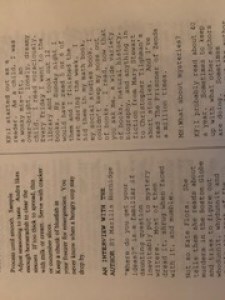 provide updates about my books. Usually, it will be someone who says, “Have I read all your books?” and when I say “Well, have you read all 24, I get a blank stare and then the question: What have I missed?” I know that I’m supposed to have a newsletter. I’ve tried. I used to have a paper one. It’s the electronic thing that defeats me. I tried and wrestled with mailchimp. Tried and failed and wrestled again. I’ve twisted arms to get friends to do it. I’ve begged the universe for a millennial to help. I’ve searched sites that supposedly will let me find the right folks to do it. In the end, I give up and go back to writing. It’s the thing I understand.
provide updates about my books. Usually, it will be someone who says, “Have I read all your books?” and when I say “Well, have you read all 24, I get a blank stare and then the question: What have I missed?” I know that I’m supposed to have a newsletter. I’ve tried. I used to have a paper one. It’s the electronic thing that defeats me. I tried and wrestled with mailchimp. Tried and failed and wrestled again. I’ve twisted arms to get friends to do it. I’ve begged the universe for a millennial to help. I’ve searched sites that supposedly will let me find the right folks to do it. In the end, I give up and go back to writing. It’s the thing I understand.
But you out there in MCW land, who read our posts and share your comments, do deserve the occasional update. So I thought I’d share a bit of what’s going on here at my desk, or occasionally in front of the frozen peas, where I had frozen myself as I ponder the next steps in the current WIP. So here goes.
First, yes, there is a new Thea Kozak mystery. I thought it was going to be out this summer but publishing’s timetable and Kate’s timetable seem not to be meshed at the moment. In any event, by September, at least, the 11th book in the series, Death Sends a Message, will finally arrive. Writing the book, as I have perhaps complained of here before, has been a huge challenge. Those of you who know Thea also know that she’s a rescuer. She describes herself as “Thea the Human Tow Truck” who can’t help stopping and rescuing people she passes along the way who are clearly in need of assistance. In the new book, I have given her an enormous new challenge: she and Andre finally have the baby they’ve been longing for, and a newborn puts quite a crimp in her ability to go out and solve crimes.
I knew this was going to be a challenge for Thea before I started the book. I still didn’t anticipate how much of challenge it was going to be for me—the writer. How does a new mother, stuck at home, go about collecting the necessary information? Obviously, people have to come to her. She has to fall back on her research skills. She will need to lean heavily on those observational skills that Andre has been teaching her. Between them, it was a game. In this case, though, it goes far beyond that.
The book opens when she has to go to Freeport to try and find her baby a hat, something she neglected to buy in advance. (She was a bit busy, you will recall from reading Death Comes Knocking with bad guys and a missing neighbor and a few bodies across the street, never mind delivering someone else’s baby.) Before she goes into the store, she sees another young mother happily enjoying an ice cream cone and decides that will be her next stop. When she comes out, having found a little yellow cap embroidered with a slightly tipsy duck, the cone is gone and the young woman is screaming that her baby is missing. Despite her resolve to avoid getting involved in anything other than her own baby and her maternity leave, she can’t ignore the woman’s desperation. She stops, asks a few questions, and flags down a passing police officer. Then she goes home. But those few minutes embroil her in a case not only of a missing baby, but of a homicide, and the young mother’s own disappearance.
she neglected to buy in advance. (She was a bit busy, you will recall from reading Death Comes Knocking with bad guys and a missing neighbor and a few bodies across the street, never mind delivering someone else’s baby.) Before she goes into the store, she sees another young mother happily enjoying an ice cream cone and decides that will be her next stop. When she comes out, having found a little yellow cap embroidered with a slightly tipsy duck, the cone is gone and the young woman is screaming that her baby is missing. Despite her resolve to avoid getting involved in anything other than her own baby and her maternity leave, she can’t ignore the woman’s desperation. She stops, asks a few questions, and flags down a passing police officer. Then she goes home. But those few minutes embroil her in a case not only of a missing baby, but of a homicide, and the young mother’s own disappearance.
Wow. So much for Thea’s maternity leave. Add in a crisis at a client school only she can handle, and there’s not a lot of peace and quiet.
Like many authors, I have a bunch of what I call “Books in the Drawer.” These are books that I’m still tweaking, or that haven’t sold yet. One of the books in the drawer is one that I love but my agent didn’t, Teach Her a Lesson. It’s a domestic thriller about a young female school teacher who finds herself accused of an affair with a student. She knows his story is false and that it’s all in his head, but the school administration won’t listen. As people she thought were her friends turn against her, and the lurid details of her supposed relationship are everywhere, her life becomes a car wreck. Worse, while she struggles to prove her innocence, her tormenter is losing patience with the slow pace of the justice system and begins to plot his own revenge. I am thrilled to share that in 2023, the book will be published by Encircle Publications and I will get to join the Encircle family.
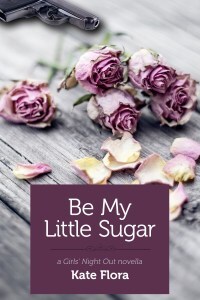 Enough, right? Ah, but there’s more. From time to time, when I’m between stories or just need a break from all the darkness of the types of books I write, I go write something completely different. Examples of this are the two novellas, Girl’s Night Out (warning: this is very short) and Be My Little Sugar https://www.amazon.com/gp/product/B07G2Y6FCT?ref=knfdg_R_kine_which feature a woman’s book group taking revenge on men behaving badly. Well, a while back I wrote a short story about a woman ghosted by her boyfriend who gets a shelter dog to help her get her life back on track. The story was called Unleashed Love, because the dog turns out to have a talent for matchmaking. During the pandemic, I dug out that story and turned it into a novel. My beta readers tell me that it is women’s fiction, and my next task (along with writing the next Joe Burgess book, of course) is to go through all those beta comments and do a rewrite of the book. Who knows, by next summer, it may join the other books on the list.
Enough, right? Ah, but there’s more. From time to time, when I’m between stories or just need a break from all the darkness of the types of books I write, I go write something completely different. Examples of this are the two novellas, Girl’s Night Out (warning: this is very short) and Be My Little Sugar https://www.amazon.com/gp/product/B07G2Y6FCT?ref=knfdg_R_kine_which feature a woman’s book group taking revenge on men behaving badly. Well, a while back I wrote a short story about a woman ghosted by her boyfriend who gets a shelter dog to help her get her life back on track. The story was called Unleashed Love, because the dog turns out to have a talent for matchmaking. During the pandemic, I dug out that story and turned it into a novel. My beta readers tell me that it is women’s fiction, and my next task (along with writing the next Joe Burgess book, of course) is to go through all those beta comments and do a rewrite of the book. Who knows, by next summer, it may join the other books on the list.
Or become another one of my books that you can complain I forgot to tell you about.
I’ll try to be better with those updates, I promise. Meanwhile, if you haven’t read the last Joe Burgess, A World of Deceit, you can spend some quality time with Joe and his team on a not so peaceful lake in the lovely mountains of Western Maine. Jet skis. Malevolent teens. Family dysfunction. The father who won’t wake up? Detective Joe Burgess, it turns out, isn’t very good at going on vacation.
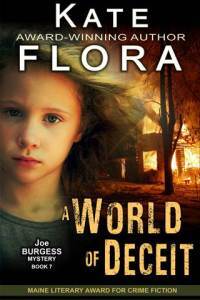
Lea Wait's Blog
- Lea Wait's profile
- 509 followers



